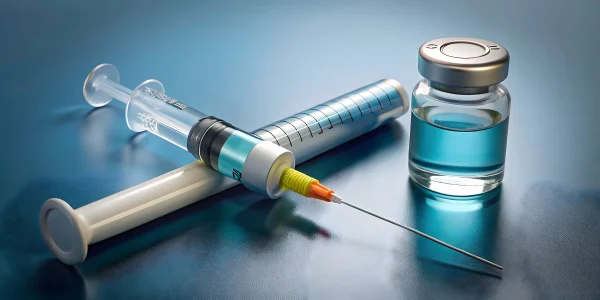
Injectable PrEP: HIV Prevention in UK
A New Dawn in HIV Prevention: Injectable Hope Arrives in England and Wales
Health authorities will offer a revolutionary injection that stops HIV transmission for the first time through the NHS across England and Wales. This long-acting shot provides a vital alternative to daily pills, aligning the nations with Scotland's established policy. The introduction of this bimonthly injection marks a significant step forward in the public health strategy to tackle the virus. Medical specialists think this advancement is vital for the goal of eradicating new instances of HIV before 2030. The therapy, known as cabotegravir, offers a private and manageable option for individuals who struggle to maintain a daily medication regimen. Its approval represents a pivotal moment in the ongoing effort to broaden the range of preventative treatments available to those at risk.
A Landmark Approval for Public Health
The National Institute for Health and Care Excellence (NICE) has recommended the long-acting injectable, cabotegravir (CAB-LA), for use within the NHS. This decision follows a rigorous evaluation of the treatment's effectiveness and cost-efficiency. Given as an injection every two months, it offers a powerful alternative for individuals who struggle with daily oral pre-exposure prophylaxis (PrEP). Health Secretary Wes Streeting described the approval as a "game-changing" moment, underscoring the government's commitment to delivering pioneering therapies that preserve life. He explained that for at-risk individuals unable to use other prevention methods, this new option represents a significant beacon of hope. The rollout is anticipated to begin in the coming months, with clinics specializing in sexual health poised to administer the therapy.
Addressing the Challenges of Oral PrEP
While daily oral PrEP pills are highly effective at preventing HIV, adherence can be a significant challenge for some. Practical difficulties, such as unstable housing or situations involving domestic violence, can disrupt the consistency required for the pills to work. Furthermore, the stigma associated with HIV can create a barrier, with individuals fearing judgment or discovery by family or housemates. The bimonthly injection bypasses many of these issues, offering a more discreet and manageable solution. This new method provides sustained protection without the daily reminder, which can be a source of anxiety for some. By offering an alternative that requires less frequent administration, health services can cater to a wider range of needs and personal circumstances.
The Science Behind the Shot
Cabotegravir functions as an integrase strand transfer inhibitor. The drug works by preventing the viral DNA from integrating into the genetic material of human immune cells, a crucial step in the HIV replication cycle. This mechanism effectively stops the virus from establishing an infection in the body following exposure. Administered by a healthcare professional, the treatment begins with two initiation injections one month apart, followed by maintenance injections every two months. Clinical trials have demonstrated its high efficacy, offering a robust shield against HIV contracted through sexual contact. The treatment, which ViiV Healthcare manufactures, is meant to be combined with safe sex behaviours for complete safeguarding from the virus.
Future Horizons: The Promise of Lenacapavir
As cabotegravir becomes available, another promising development is on the horizon. Preliminary findings for another injectable, lenacapavir, suggest an even longer-acting prevention method may soon be possible. Phase 3 trial data has shown lenacapavir, administered just twice a year, to be safe and highly effective in preventing HIV infection. In studies involving cisgender women and another including cisgender men and gender-diverse people, the drug demonstrated remarkable efficacy, reducing HIV infections significantly compared to both background incidence and daily oral medication. The World Health Organization has welcomed these findings, highlighting the potential for lenacapavir to transform global HIV prevention efforts by offering a highly convenient option for diverse populations.

An Ambitious Goal: Ending Transmissions by 2030
The introduction of injectable PrEP is a cornerstone of the UK's ambitious strategy to end new HIV transmissions by the year 2030. This goal, outlined in the HIV Action Plan, relies on a multi-faceted approach that includes widespread testing, effective prevention, and rapid access to treatment. Officials believe that England is on track to meet this target, citing falling diagnosis rates and increased uptake of preventative measures. The plan involves substantial investment in expanding services, including the successful opt-out testing programme in hospital emergency departments. By normalising testing and providing a broader array of prevention tools, authorities aim to halt the spread of the virus and ultimately eliminate it as a public health threat.
Expanding Access Through Innovation
Health charities and advocates have lauded the endorsement of injectable PrEP, calling it a crucial instrument for addressing health disparities. Richard Angell, who leads the Terrence Higgins Trust, highlighted the treatment's capacity to connect with people who currently do not use other HIV prevention methods. He contended that the time is right to investigate providing this transformative treatment in settings beyond traditional public sexual health services to maximise its reach and impact. The convenience of a long-acting injection could be particularly beneficial for marginalised communities who face systemic barriers to healthcare. By diversifying the delivery models for PrEP, the NHS can ensure that these life-saving interventions are accessible to all who need them, regardless of their circumstances.
The Economic and Human Impact
The virus known as HIV compromises the immune system, reducing the body's capability to combat common infections and illnesses. If left untreated, it can lead to AIDS (Acquired Immune Deficiency Syndrome). The virus can be transmitted through unprotected sex, sharing needles, or from a mother to her baby during birth. While there is no cure for HIV, advancements in antiretroviral therapy have transformed it into a manageable long-term condition, allowing people with the virus to live long and healthy lives. The availability of preventative measures like PrEP is crucial in reducing the rate of new infections, thereby lessening both the human cost of the epidemic and the long-term financial burden on the healthcare system.
Navigating Stigma and Misinformation
Despite significant medical progress, stigma surrounding HIV remains a pervasive issue. Negative attitudes and beliefs can deter people from getting tested, seeking information, or using preventative methods like PrEP. This prejudice can manifest as moral judgments or the erroneous belief that HIV only affects certain groups. Such stigma creates a climate of fear and secrecy, making it more difficult for individuals to disclose their status or access the care they need. Overcoming these social barriers is as critical as developing new medical treatments. Public health campaigns and community-led initiatives play a vital role in educating the public, challenging misconceptions, and fostering a more supportive environment for people affected by HIV.
The Importance of Widespread Testing
Identifying undiagnosed infections is a critical component of the strategy to end HIV transmission. To this end, NHS England has significantly expanded its opt-out testing programme in hospital accident and emergency departments. This initiative, now active in 89 hospitals in locations where HIV is particularly common, routinely tests anyone having blood taken. The programme has proven highly successful, identifying thousands of new cases of HIV and other blood-borne viruses, and re-engaging people who had been previously diagnosed but were not receiving care. This proactive approach ensures that more people are aware of their status and can begin life-saving treatment promptly, which also prevents onward transmission.
Data-Driven Strategies to Address Disparities
Official figures reveal that while PrEP uptake is increasing overall, significant disparities persist across different demographic groups. Access and use are highest among gay, bisexual, and other men who have sex with men. Conversely, uptake is considerably less frequent among heterosexual women and men of Black African heritage, even though these communities are disproportionately affected by HIV. Addressing these inequalities is a key priority for public health officials. Tailored outreach programmes and community engagement are essential to ensure that information and access to PrEP reach all populations at risk.
A Powerful New Tool in the Arsenal
The long-acting shot was praised by Dr Michael Brady, NHS England's National Advisor for LGBT+ Health, as a major enhancement to the country's HIV prevention toolkit. He pointed out that it offers a potent alternative for individuals facing risk who cannot take oral tablets, helping to ensure that everyone who needs PrEP can access an effective method. Dr Brady emphasised the huge progress made in HIV treatment and prevention over the last decade. The addition of injectable PrEP is seen as a crucial step that will bring the country closer to achieving its goal of ending HIV transmissions. This sentiment is shared across the public health community, which views the new therapy as a vital enhancement to existing prevention efforts.

Patient Perspectives on New Prevention Methods
For individuals currently using oral PrEP, the availability of an injectable alternative is welcome news. The prospect of moving from a daily pill to a bimonthly injection offers a significant improvement in privacy and ease of use. The ongoing advancements in HIV care and prevention stand in sharp opposition to the initial phase of the health crisis, defined by anxiety, no effective therapies, and tragic outcomes. The evolution from HIV being a fatal diagnosis to a manageable condition with multiple prevention options underscores the remarkable achievements of medical science and public health advocacy over the past four decades. This progress offers profound hope for a future free from new HIV transmissions.
The Role of Healthcare Professionals
Clinics specializing in sexual health are set to lead the delivery of the new injectable PrEP service. Healthcare professionals in these settings will play a crucial role in identifying eligible individuals, administering the injections, and providing ongoing support and advice. The rollout will require careful planning and resources to ensure that clinics can meet the anticipated demand without compromising other essential services. Charities have raised concerns about existing extended waits for consultations at some clinics, stressing the need for a swift and well-funded implementation of the new treatment. Investment in the sexual health workforce and infrastructure will be paramount to the success of this new public health initiative.
A Collaborative Effort Towards a Common Goal
The journey to end the HIV epidemic is a collaborative one, involving government, the NHS, pharmaceutical companies, charities, and community organisations. Endorsing cabotegravir, which ViiV Healthcare produces, required talks to guarantee the NHS could obtain the therapy at a reduced cost, allowing for its use in the public healthcare framework. Ongoing collaboration among all involved parties is vital to conquer the final hurdles, from fighting prejudice to guaranteeing fair access to modern preventative technologies. This united front is the driving force behind the progress being made and offers the best hope of achieving the 2030 target.
Recently Added
Categories
- Arts And Humanities
- Blog
- Business And Management
- Criminology
- Education
- Environment And Conservation
- Farming And Animal Care
- Geopolitics
- Lifestyle And Beauty
- Medicine And Science
- Mental Health
- Nutrition And Diet
- Religion And Spirituality
- Social Care And Health
- Sport And Fitness
- Technology
- Uncategorized
- Videos
